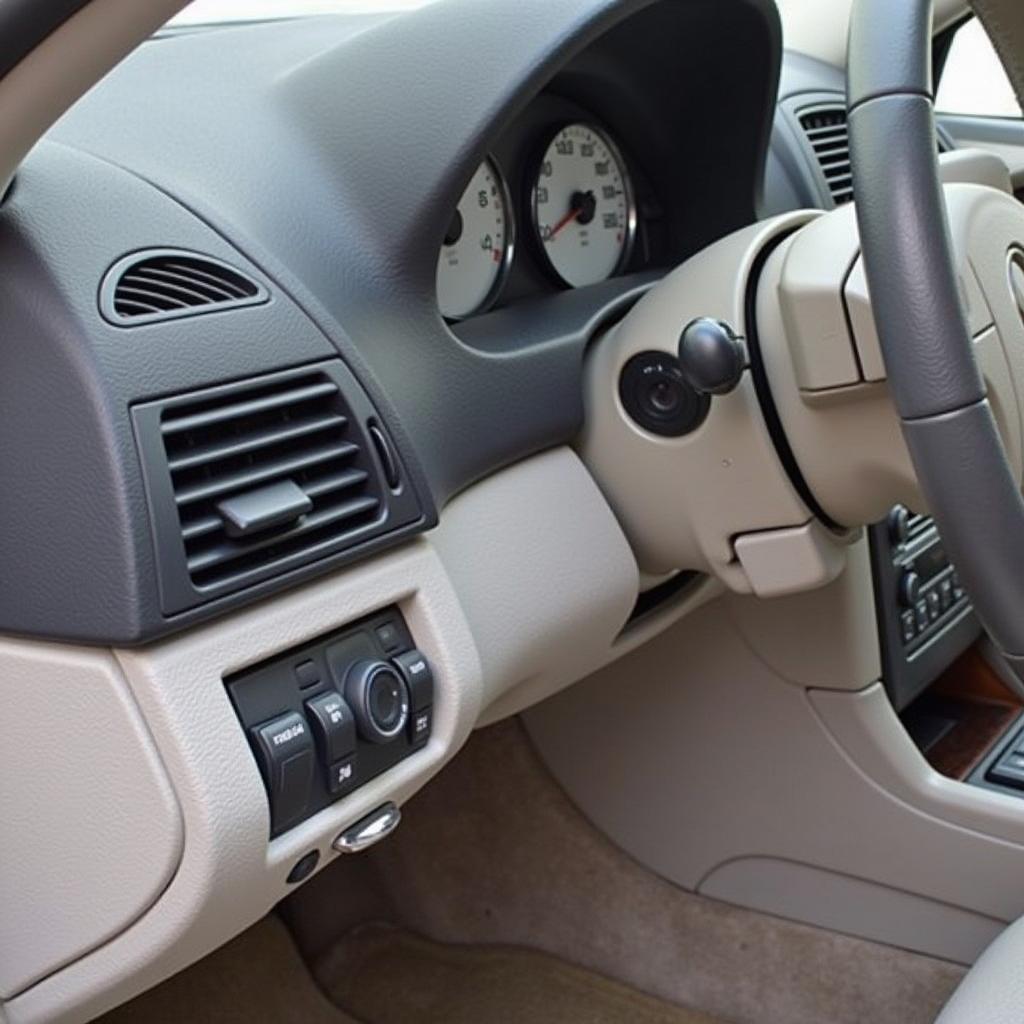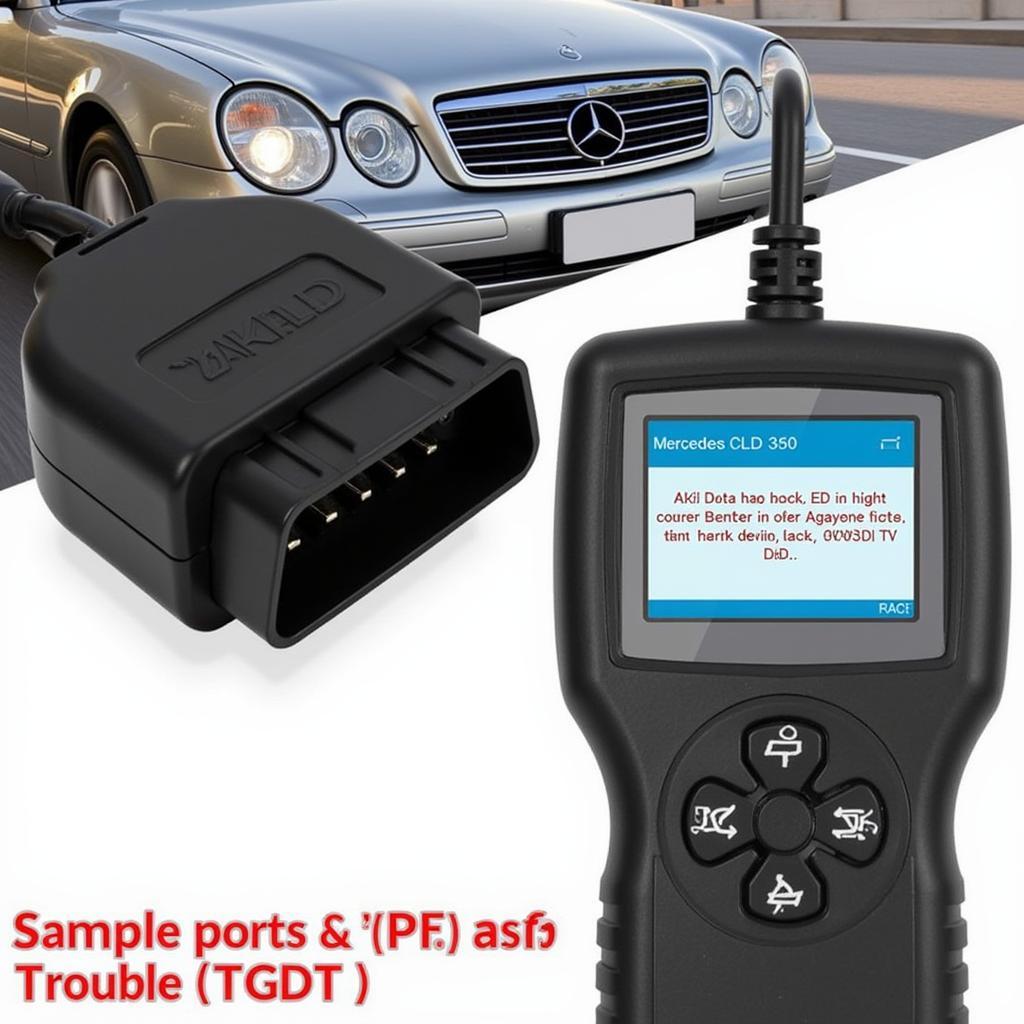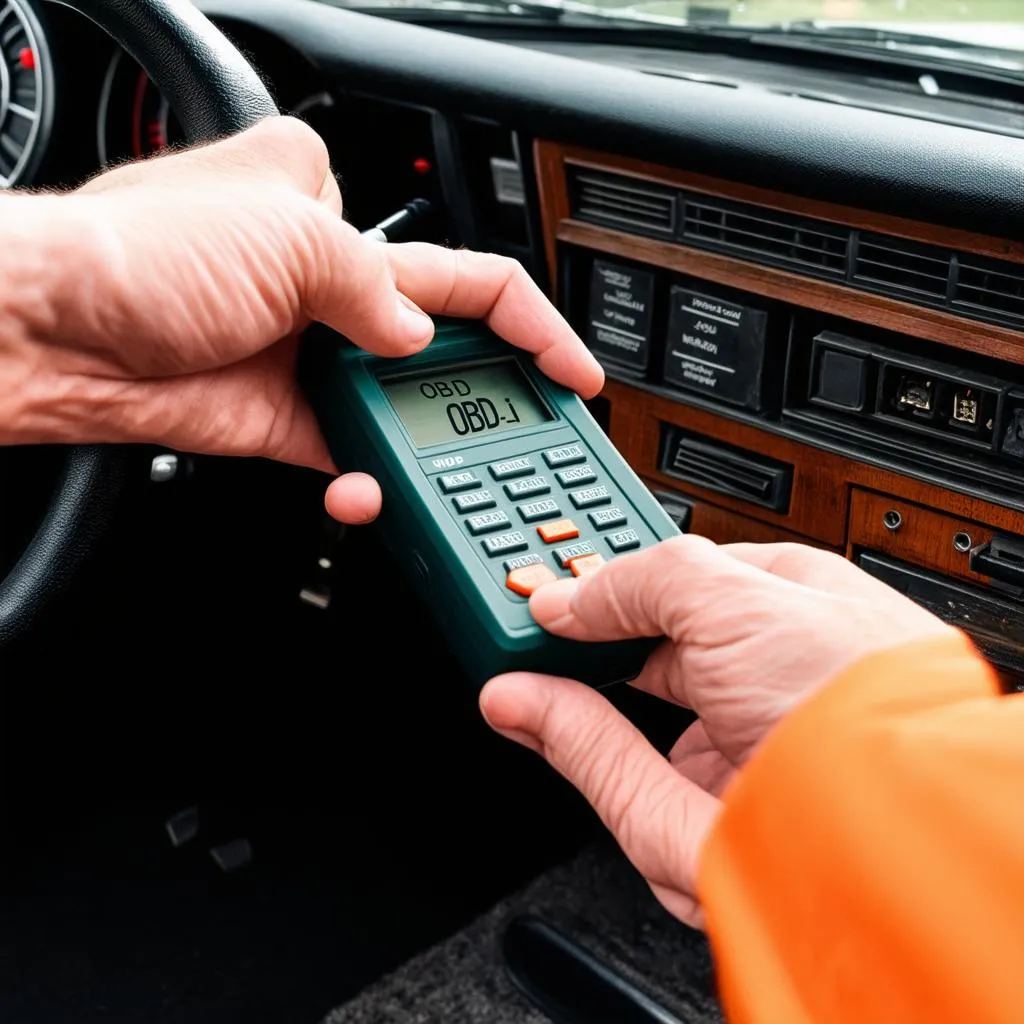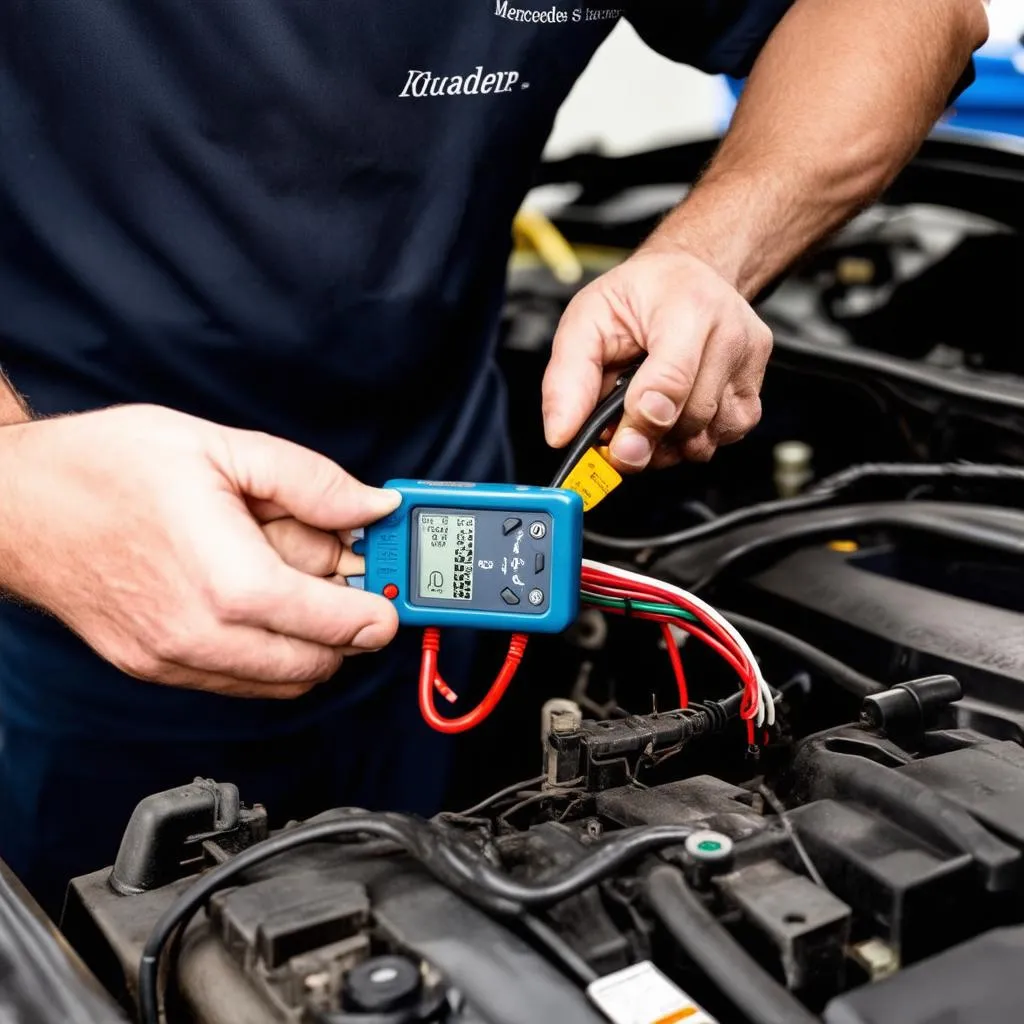Locating your Mercedes CLK 350’s on-board diagnostics (OBD) port is crucial for diagnosing car troubles. Whether you’re a seasoned mechanic or a car owner wanting to understand your vehicle better, knowing where to find this port is essential. This article will guide you through the process, offering tips, common troubleshooting steps, and expert insights to help you become more comfortable with your car’s diagnostics.
Why is Knowing the OBD Port Location Important?
The OBD-II port is your gateway to understanding your car’s health. It allows you to connect a diagnostic scanner, pulling codes that pinpoint issues ranging from a faulty sensor to more complex problems. Having easy access to this port can save you time and money, enabling quicker diagnosis and potentially preventing more significant issues down the road.
Where to Find the OBD Port on a Mercedes CLK 350
Generally, the OBD-II port in a Mercedes CLK 350 is located beneath the dashboard on the driver’s side, near the steering column. It’s usually a 16-pin trapezoidal connector. Sometimes, it might be hidden behind a small panel or cover. Look for a cover that resembles an outlet or a small rectangular door.
 Mercedes CLK 350 OBD Port Location – Driver's Side
Mercedes CLK 350 OBD Port Location – Driver's Side
Common Troubleshooting Tips for Locating the OBD Port
Sometimes, the OBD port can be tricky to find. Here are some helpful tips:
- Check your owner’s manual: Your car’s manual is the best resource for finding the exact location of the OBD port.
- Use a flashlight: A flashlight can help illuminate dark areas under the dashboard, making it easier to spot the port.
- Feel around: If you can’t see the port, try gently feeling around under the dashboard. The connector has a distinct shape and texture.
- Remove any panels: Some cars have removable panels that might be concealing the OBD port. Check for screws or clips and carefully remove any panels near the steering column.
Understanding OBD-II Codes
Once you’ve located the OBD-II port and connected a scanner, you’ll likely encounter a series of codes. These codes are standardized and correspond to specific issues within your car’s systems. Understanding these codes is crucial for accurate diagnosis and repair.
 OBD Scanner Connected to a Mercedes CLK 350 Reading Codes
OBD Scanner Connected to a Mercedes CLK 350 Reading Codes
Expert Insights on Mercedes CLK 350 OBD Diagnostics
“Knowing the location of the OBD-II port and understanding how to use a diagnostic scanner can empower car owners to take control of their vehicle’s maintenance,” says John Davis, Senior Automotive Diagnostic Technician. “It allows for early detection of potential problems, saving time and money in the long run.”
The Importance of Regular OBD-II Scans
Regularly scanning your Mercedes CLK 350 with an OBD-II scanner can be a valuable preventative maintenance measure. It allows you to catch issues early on before they escalate into more serious problems.
 Mechanic Using OBD Scanner on Mercedes CLK 350
Mechanic Using OBD Scanner on Mercedes CLK 350
“Regular scans can help identify problems that might not yet be causing noticeable symptoms, preventing costly repairs down the line,” adds Sarah Miller, Certified Automotive Technician.
Conclusion
Locating the mercedes clk 350 locate on-board diagnostics obd port is the first step in effectively diagnosing and addressing potential car issues. With a little knowledge and the right tools, you can gain valuable insights into your vehicle’s health and maintain it in optimal condition.
FAQ
- What is the OBD port used for? The OBD port allows you to connect a diagnostic scanner to retrieve diagnostic trouble codes (DTCs) from your vehicle’s computer.
- Is it safe to use an OBD scanner myself? Yes, using an OBD-II scanner is generally safe and easy to do.
- What if I can’t find my OBD port? Consult your owner’s manual or contact a qualified mechanic.
- How often should I scan my car? It’s recommended to scan your car at least once a year or when you suspect a problem.
- What do OBD codes mean? OBD codes represent specific issues within your vehicle’s systems. You can look up the meaning of codes online or in a repair manual.
- Can I reset OBD codes myself? Yes, you can usually reset codes with a scanner, but the underlying problem may persist.
- What should I do if a code reappears after resetting it? If a code reappears, it indicates a persistent problem that requires further diagnosis and repair by a qualified technician.
Need help? Contact us via Whatsapp: +1 (641) 206-8880, Email: CARDIAGTECH[email protected] or visit us at 276 Reock St, City of Orange, NJ 07050, United States. We have a 24/7 customer support team ready to assist you.


